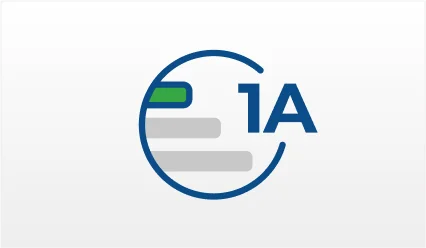Getting tested with DecisionDx-UM
The DecisionDx-UM testing process is straightforward. The DecisionDx-UM test measures the activity of 15 genes from your eye tumor. The eye tumor specimen that is tested is typically taken as a biopsy during your radiation treatment or, for those patients needing an enucleation, at the time of enucleation or afterward. Once completed, test results are sent directly to your healthcare provider and will be interpreted based on your individual situation along with other information and procedures.
Getting tested with DecisionDx-UM
Understanding the results
[.text-weight-semibold]Knowing your tumor class can be extremely helpful to you and your doctor[.text-weight-semibold]
DecisionDx-UM measures the activity of 15 specific genes within your eye tumor to determine the likelihood of it spreading from the eye. The test identifies your prognosis as either Class 1A, Class 1B or Class 2, which provides the risk of your tumor spreading (metastasizing) within five years, the period for which data has been collected.
This information can be extremely helpful to you and your doctor in planning your follow-up care. There are considerations about the type and frequency of monitoring you will need, and whether you would be a candidate for certain treatments or even clinical trials as they become available. Below are the potential test results and the considerations for each.
What class score means
The DecisionDx-UM test is extremely valuable in guiding a patient’s care following treatment of the original eye tumor. It measures the activity or “expression” of certain genes within the tumor to determine its risk profile, or Class:
While the DecisionDx-UM test cannot, at this point, guide your doctor toward a specific therapy, a study published in Clinical Ophthalmology, which involved doctor surveys and medical chart review of Medicare-treated patients, showed that molecular testing such as the GEP test has a significant impact on the management of uveal melanoma. Not only are most ophthalmologists treating uveal melanoma using molecular testing, but they are also more likely to increase frequency of disease monitoring or recommend clinical trials for those patients whose test results showed they were at high-risk of metastasis. This was confirmed in two recent prospective studies published in Journal of Oncology and Melanoma Management. Decisions about your surveillance, treatment and other follow-up plans should be made by you and your doctors.

Where to get tested
While the majority of ocular oncologists in the United States have adopted DecisionDx-UM as standard of care in the management of uveal melanoma, some centers may still be unfamiliar with the test.
If you would like assistance in locating a doctor in your area who is familiar with DecisionDx-UM prognostic testing, contact Castle Biosciences at 866-788-9007 and select option #3.
Insurance & Medicare coverage
Castle Biosciences works with providers to secure coverage
Castle Biosciences works with all insurance providers, including Medicare, Medicaid, commercial insurers, and the VA, to secure coverage and payment for the DecisionDx-UM test. Castle will submit insurance claims and manage the insurance billing process on behalf of patients. The company also sponsors an industry-leading Patient Assistance Program with the belief that quality care should not depend on financial considerations.
You can get more information about insurance coverage, claims processing, and financial assistance by
calling 866-788-9007 and selecting option #3.











